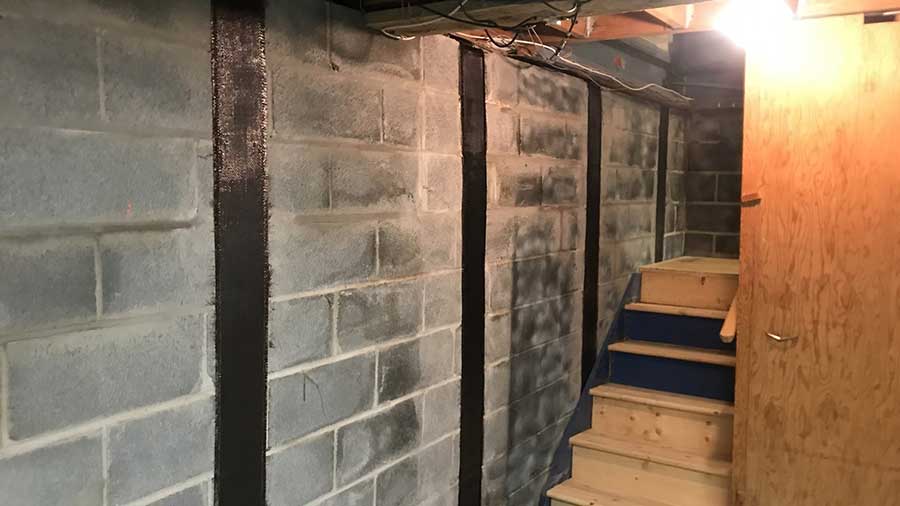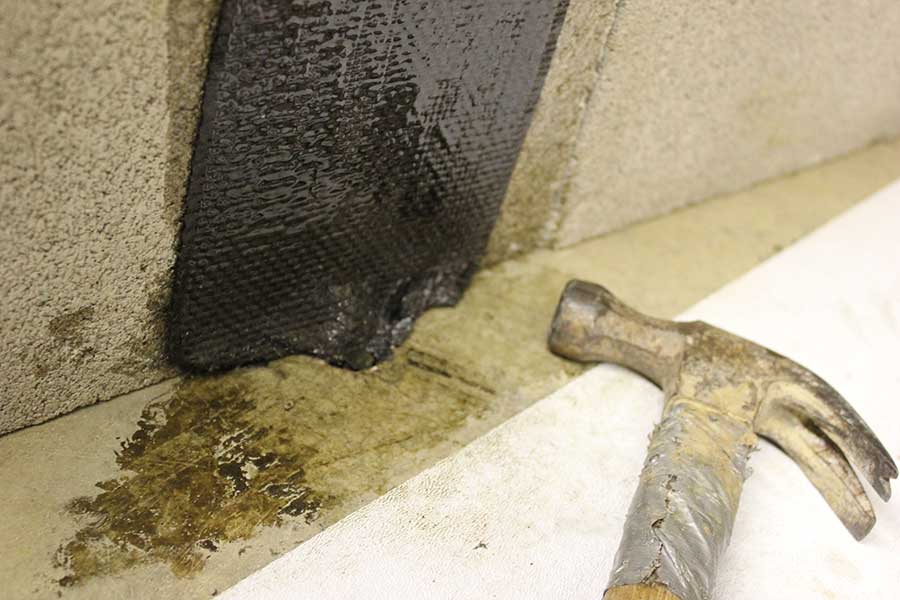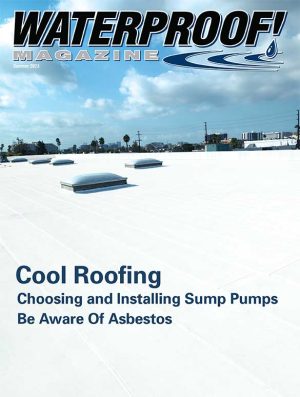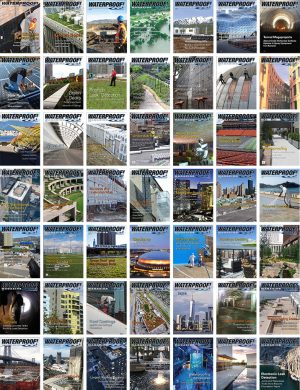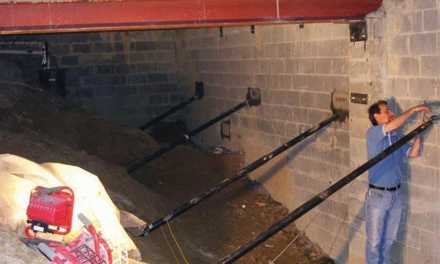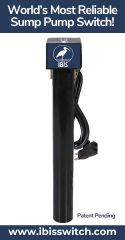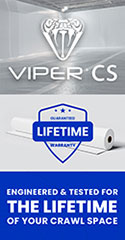Unidirectional, vertical 6-inch carbon strips installed on the repaired wall.
A contractor from EcoSpect out of Syracuse, New York, was called out to look at a bowing concrete masonry unit (CMU) wall discovered in the basement during a home inspection being performed for a real estate transaction. EcoSpect determined that CFRP would be the best solution to strengthen the wall to prevent further inward movement while minimizing the cost, labor, and intrusiveness of the repair.
The Challenge
When a wall bows more than 2 inches, the repair becomes more cumbersome and costly. By using CFRP, EcoSpect provided the homeowners a more cost-effective solution than would be possible with traditional methods. Excavating and pushing the wall in would be more expensive, and there would be access restrictions to consider. If the homeowners approved the expense of pushing the wall back, CFRP would still be applied to strengthen the wall to prevent it from bowing again. Beams and tieback systems were also considered, since they provide resistance against deflection but they do not strengthen the entire height of the wall. Without adding strength from top to bottom with carbon fiber, future failures are still possible.
The Solution
EcoSpect chose the 400 GSM Bowed Wall Repair Kit (Unidirectional, Vertical) in 7-foot height due to its strength in one direction. Three additional walls would also be reinforced as a preventative measure. Proper surface preparation is one of the most important steps when installing CFRP. EcoSpect prepared the walls by grinding them to ensure the straps were engaged to their full capacity in order to resist any further inward movement of the wall, and to ensure a strong epoxy bond. Next, they repaired the damaged mortar joints. To ensure the repair was water-resistant, the cracked mortar needed to be knocked out and the joints were tuck-pointed. If the joints were not repaired properly, the walls were at risk of receding during the summer months when the moisture content of the soil is lower. Allowing any movement of the wall will further deteriorate the mortar joints which could create a wrinkle in the carbon fiber, decreasing the effectiveness of the repair. Nine repair kits were applied across the four surface-prepped walls for a total of 26 straps.
In addition, a single strap of 560 GSM, 12-inch wide CFRP (Bidirectional) was applied along the upper block course over the mortar joint that had started to open up where the movement manifested. The additional bidirectional strap provided strength in all directions. It was applied to increase the bond strength on the ends of the straps eliminating the possibility of a premature bond failure. The homeowners were thrilled they wouldn’t lose any square footage (due to CFRP’s thin profile) as is the case with traditional bowed wall repair methods such as steel beam reinforcement. The CFRP could easily be painted over, which meant there would be no visible trace of damage. EcoSpect was able to successfully reinforce the walls quickly and efficiently, resulting in a successful real estate transaction for the homeowners.
Project Details
CLIENT:
EcoSpect Inc.
PRODUCT USED:
- Rhino Carbon Fiber Bowed Wall Repair Kit (Unidirectional, Vertical): 400 GSM in 7-foot height and 6-inch width
- Rhino Carbon Fiber CFRP (Bidirectional): 560 GSM in 12-inch width
- RCF Saturant-Adhesive Epoxy
Spring 2023 Back Issue
$4.95 – $5.95
Crack Repair For Foundations
Waterproofing in High Humidity
Drainage Boards and Footing Drains
Residential Basement Waterproofing
Case Study 1: The Hyatt House Miami
Case Study 2: Bowed Block Wall Repair
Case Study 3: Miami’s Brickell View Terrace Apartments
Description
Description
Crack Repair For Foundations
By Vanessa Salvia
Different repair methods are used based on whether
the cracks affect the structural integrity or not.
Waterproofing in High Humidity
By Vanessa Salvia
High humidity does affect some aspects of waterproofing, and here’s what you have to keep in mind.
Drainage Boards and Footing Drains
By Vanessa Salvia
Water seepage into a building’s foundation is one of the biggest threats to structural integrity.
Residential Basement Waterproofing
By Holly Richards-Purpura
Addressing a nasty crawl space and a damp, leaking basement before selling a home.
Case Study 1: The Hyatt House Miami
The Hyatt House Miami Airport Hotel in South Miami, Florida, required more than 30,000 square feet of Polystick XFR roof underlayment.
Case Study 2: Bowed Block Wall Repair
A contractor from EcoSpect used Rhino Carbon Fiber’s Bowed Wall Repair Kits to reinforce a CMU basement wall.
Case Study 3:
Miami’s Brickell View Terrace Apartments
M3 Roofing complete a 6,000-square-foot re-roof project using a self-adhered, multi-ply roofing system from Polyglass.
Additional Info
Additional information
| Weight | N/A |
|---|---|
| Magazine Format | Digital Download Magazine, Print Mailed Magazine |

